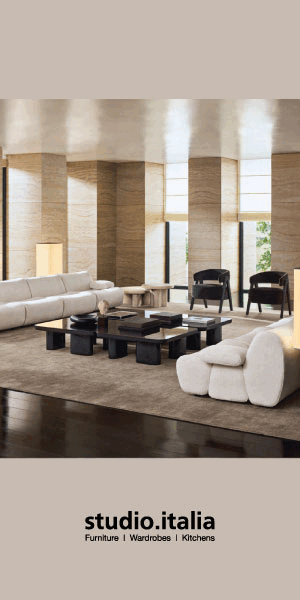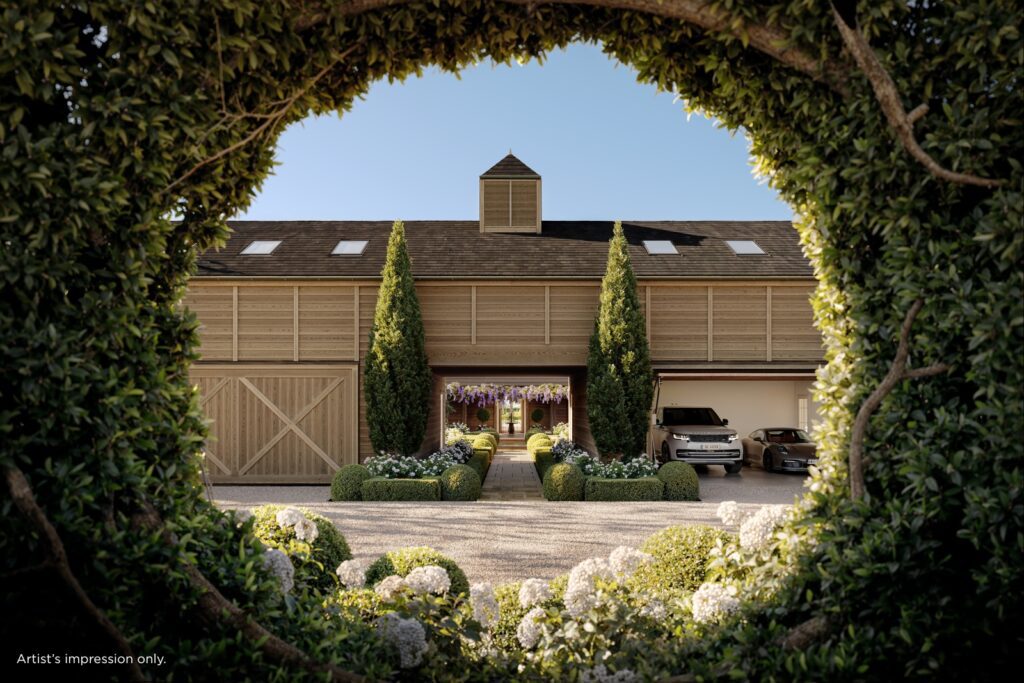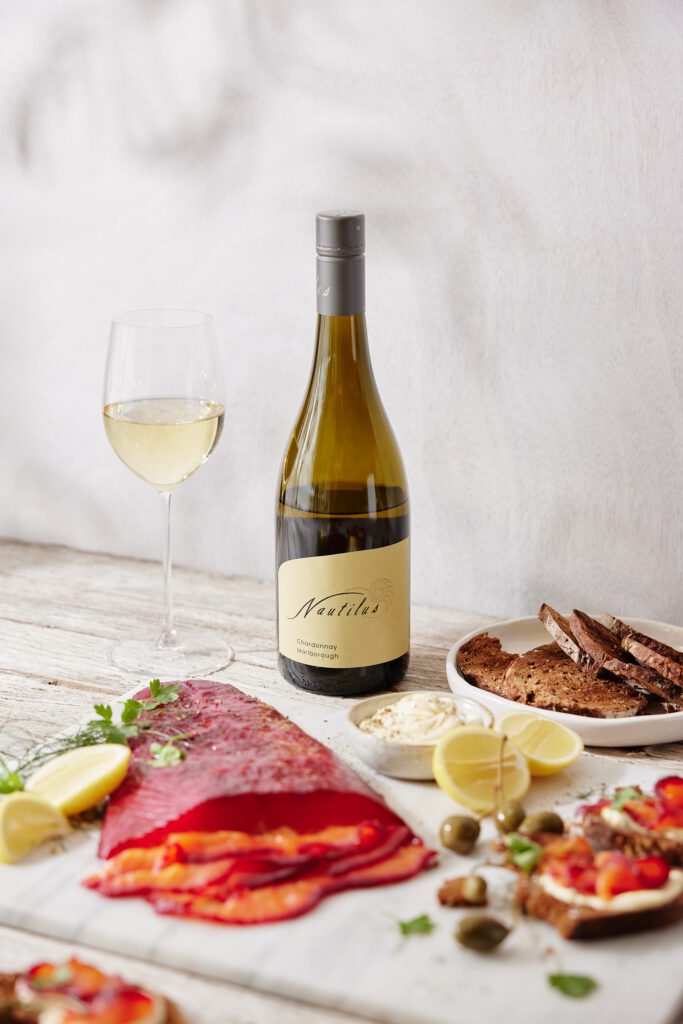There’s something confronting and powerful about looking out to the horizon and seeing nothing but the ocean, knowing the next major landmass is thousands of kilometres away.
For architect Richard Dalman and his wife Marion, the chance to purchase an earthquake-damaged site on the water — one of only a handful like it in Christchurch’s Redcliffs – was hard to pass by.
The potential was there, and Marion had spent years living oceanside in various locations in Australia so, as Richard says, “She brought me to the water”.
But it was Richard’s drawings that allowed this house to become a contemporary coastal retreat, offering a sense of floating above the water.
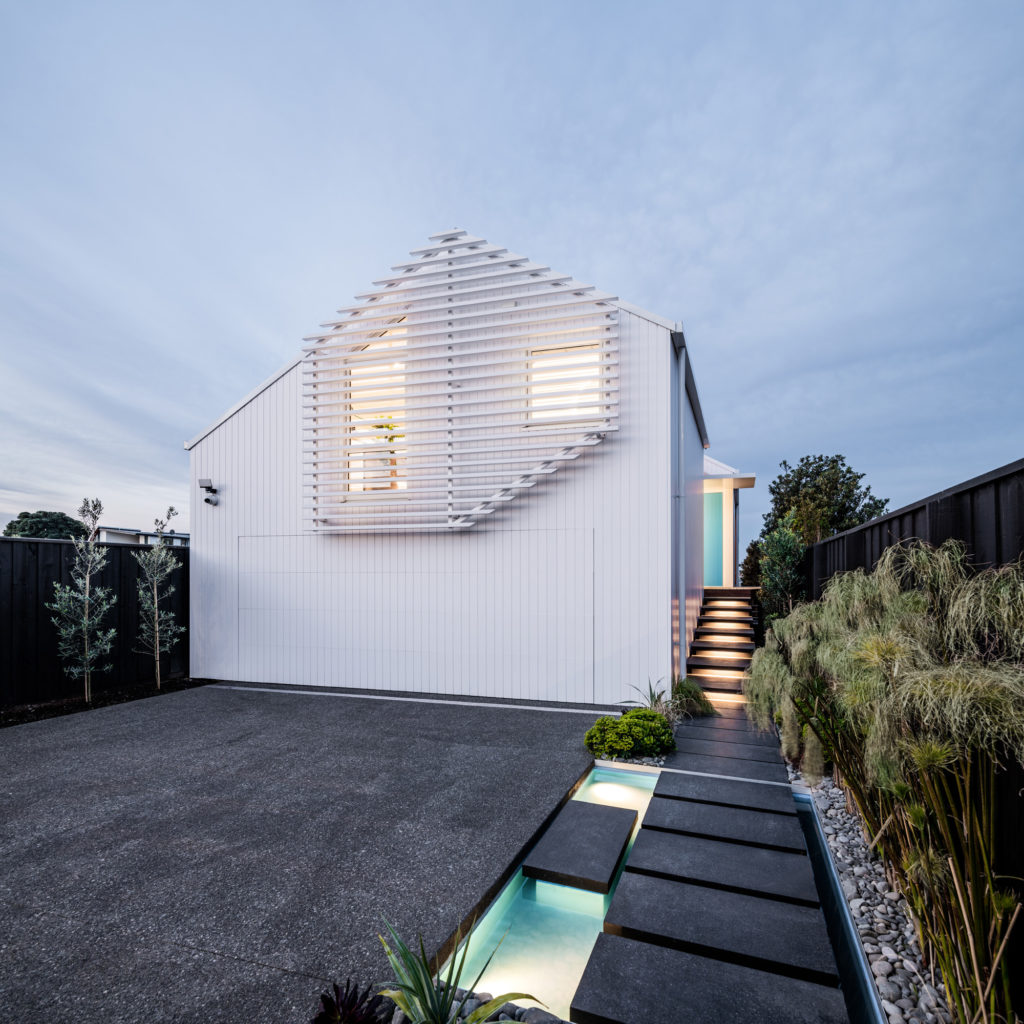
The boundary of the site at the time of purchase was seven metres out in the water It also had an earthquake-damaged sea wall.
“We reclaimed about four metres of that and built a new sea wall,” Richard explains.
The impetus to make the most of a site with a significant portion under water, was driven by the opportunity to draw the dramatic marine environment both indoors and into the outdoor spaces.
The long, narrow site’s boundaries are not parallel, which required a creative response when it came to the plan. The road and estuary facades each align with their respective boundaries but not with each other, resulting in an interesting floor plan of angled walls and spaces inside and out.
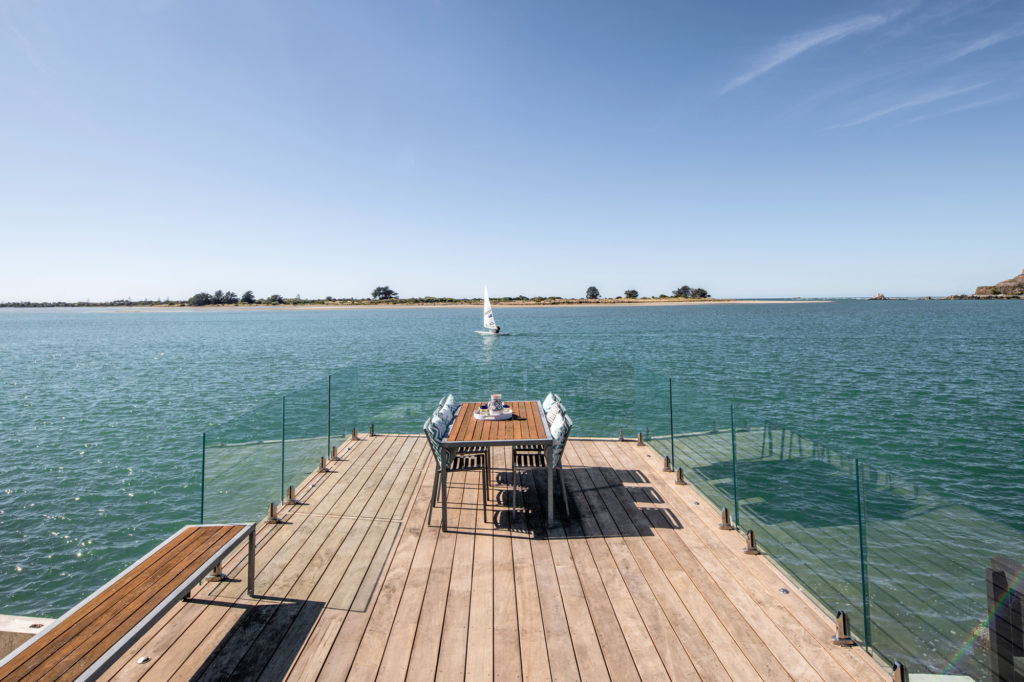
This is particularly dramatic in one of two outdoor areas — an internal courtyard designed for protection from the prevailing easterly wind that often lashes the site.
“It creates a bit of interest in this area, but the angles also allow you to sit here and still feel connected with the estuary through the extensive glazing, which includes Christchurch’s largest double-glazed residential window.”
On the estuary boundary, Richard devised a stepped deck complete with a ‘pier’ out over the water. A lower level with built-in seating allows for slightly more protection from the elements, while the upper space is devoted to embracing the openness of the sea.
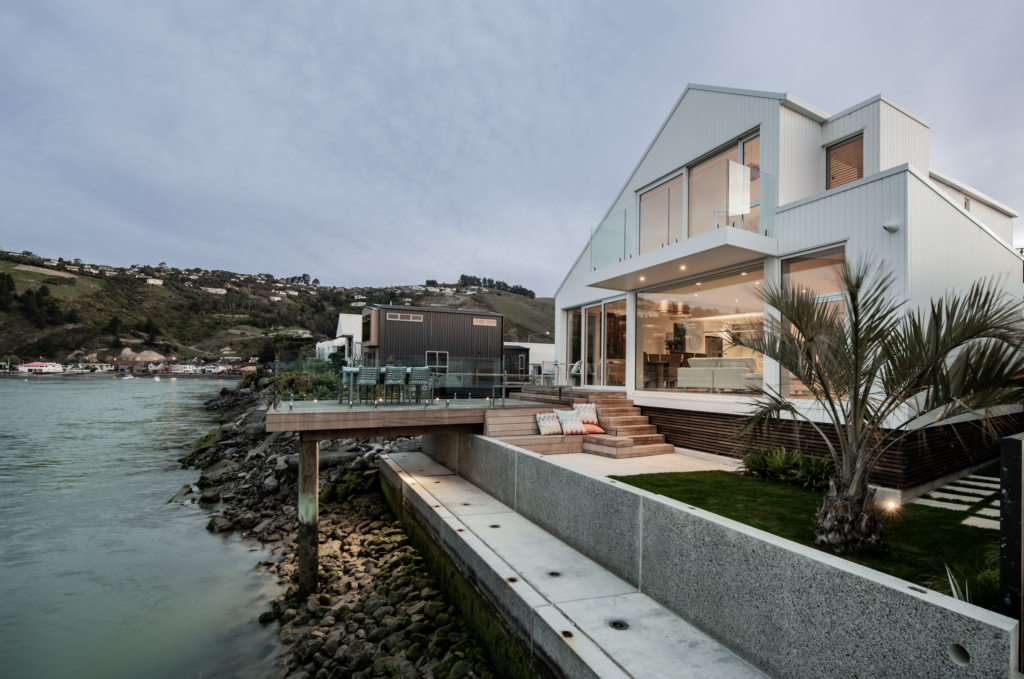
“It’s an interesting place because you enter from the road, but once inside you’re living on the water.”
The entry gives little away. The estuary isn’t visible from the road and the first nod to this being a location whose focus is on the deep blue is the entry: a shallow pond featuring granite stepping stones setting the scene for what Richard appropriately dubs ‘The Water House’.
Once inside, the journey continues through a gallery — a corridor-like space intentionally more voluminous than most, with windows carefully placed to capture moments of views to each side. Turn the corner into the main living area, and you’re immediately drawn to the expansive water vista.
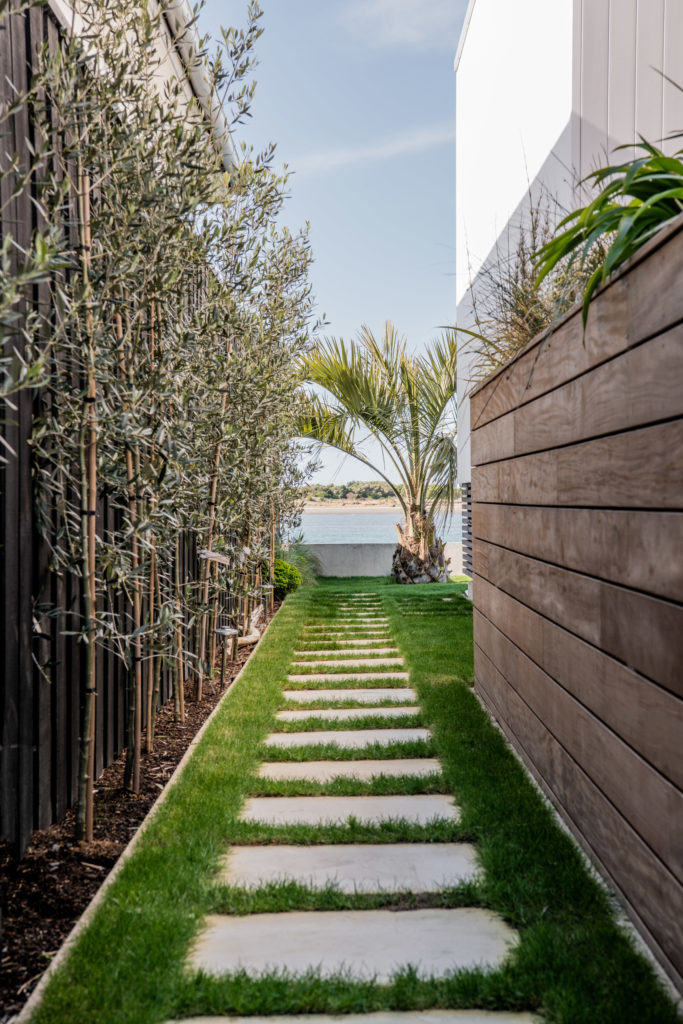
“Because the house is raised, when you’re in the living area you can’t see the ground beneath you, only the water. It creates an immediacy; the feeling that you’re on a boat yet with your feet on the ground,” Richard explains.
Down each side of the site, planting was designed for screening. On one, a variety of pōhutukawa known as Maori Princess was selected.
“This variety grows differently from the more commonly found North Island variety. It grows narrower and more upright, which lends itself to screening, but still produces the same beautiful red flowers pōhutukawa are known for.”
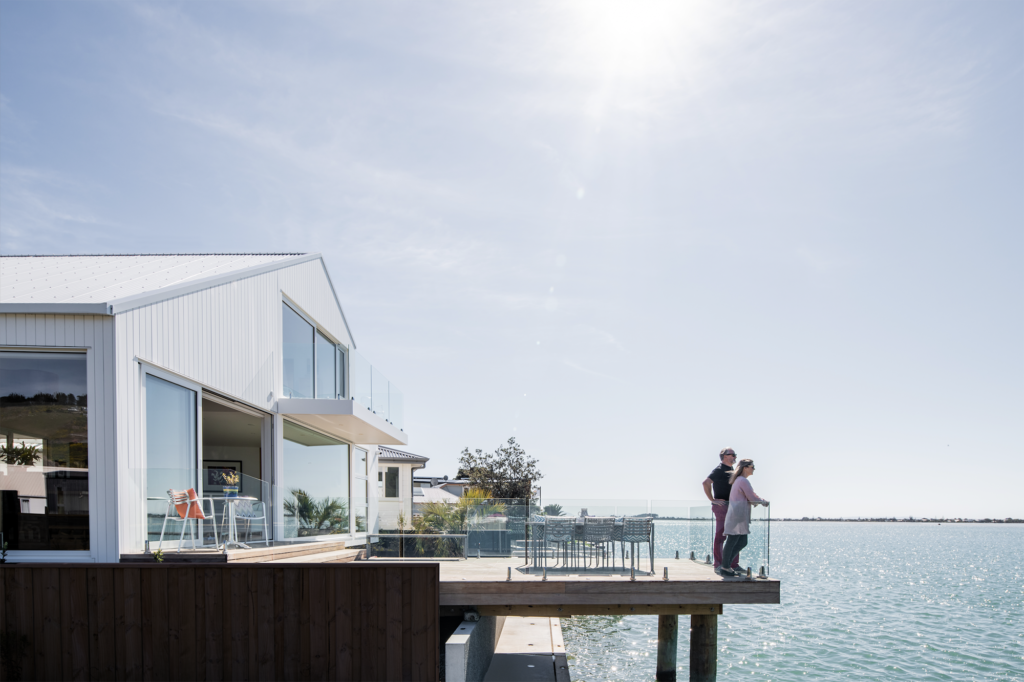
This area of Christchurch right on the coast has its own microclimate. It’s a place where frosts are relatively uncommon compared to the rest of the city.
“Succulents grow very well here so we’ve used a number of these, along with olives for screening on the northern side of the property. The olives have a dual benefit as Marion has bottled the first harvest,” Richard tells us.
While the pier is slightly too high above the water to moor a jet ski, it’s perfect for diving off as the water below is deep, Richard says.
“But we prefer to kayak. It’s a busy place, the estuary, with the yacht club nearby and paddle boarders and kayakers frequenting it.”
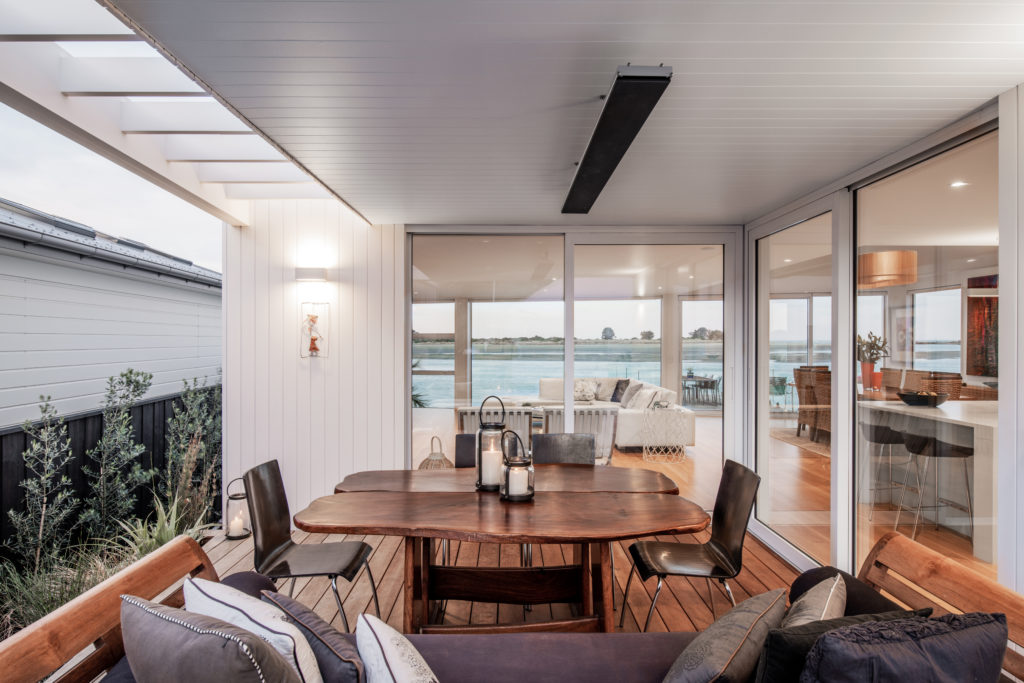
Arguably though, the real pull of the ocean here is in the form of the remarkable coastal landscape and the colours and wildlife that come with it.
“At the moment, the godwits are here from Alaska. They migrate back in our autumn. We often have kingfishers landing on our balustrade, shags fishing in front of the house, and grey herons. Our ‘pets’ are in fact wild birds.”
Below the deck, the new sea wall is fronted with rocks sourced from nearby Banks Peninsula, a carefully considered design to allow an ecosystem to develop. And that it has. At low tide, crabs and sea creatures can be seen on the rocks — hidden again at high tide when the water encroaches. Like the ever-changing coastal light that defines this site, the wildlife is always moving. There’s something new to enjoy every day from this site, in every different light.
